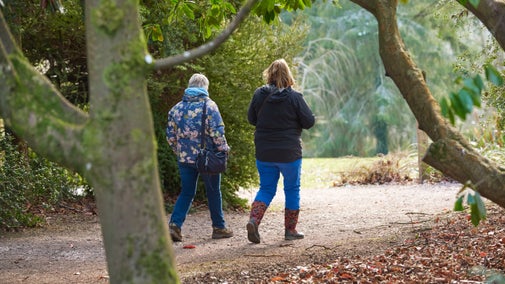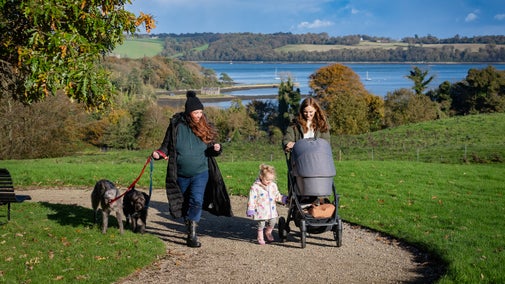A short circular walk at Woolacombe via Combesgate
Devon
Explore the seafront and natural valley at Woolacombe on this easy 3-mile circular walk. Starting at the sea front of this Victorian town, you'll take in Woolacombe's expansive sea front before turning off up a scenic grassy valley, or 'combe' where wildflowers abound in the spring and summer. Escape the crowds and enjoy shady woodland and panoramic views across the bay for a very different experience of Woolacombe.
Near to
WoolacombeStart point
Esplanade Car park, the Esplanade, Woolacombe, EX34 7BN. Grid reference: SS457254Trail information
More near here
Walk the Ilfracombe Torrs
Ascend the Torrs at Ilfracombe on this exhilarating walking trail, where you'll follow a path carved into the cliff face by the Victorians.

Woolacombe beach walk
This gentle circular wander takes you through the sand dunes and along the beach at Woolacombe, plus a stretch of the South West Coast Path.

Octavia Hill walk at Morte Point
Enjoy the dramatic geology and sweeping coastal views of Morte Point on this short walk commemorating National Trust founder Octavia Hill.

Trust10 Ilfracombe to Lee run
Enjoy this 10km run along the South West Coast Path in North Devon from Ilfracombe Torrs to Lee, which offers a memorable backdrop of coastal scenery.

Get in touch
Our partners

We’ve partnered with Cotswold Outdoor to help everyone make the most of their time outdoors in the places we care for.
You might also be interested in
Walking
Explore some of the finest landscapes in our care on coastal paths, accessible trails, woodland walks and everything in between. Find the best places to walk near you.

Walking in Devon
From rugged coastline with captivating views to gentle woodland strolls, these are some of the best walks in Devon this winter.

Cotswold Outdoor: our exclusive walking partner
Learn about the National Trust’s ongoing partnership with Cotswold Outdoor. Find out how they help us care for precious places and the exclusive discount available for National Trust supporters.

Staying safe at National Trust places
The special places in National Trust care sometimes come with a few risks for visitors, be it coastline or countryside. Find out how to keep safe throughout your visits.

Follow the Countryside Code
Help to look after National Trust places by observing a few simple guidelines during your visit and following the Countryside Code.

Family-friendly walks
Take a family-friendly walk along these trails suitable for pushchairs and children. On the way, you can go wild in natural play areas and compete in woodland den building.

Top tips for coastal walks
Get safety tips for walking by the coast, including the essential clothing and equipment to take with you and what to do before you set out.

Things to see and do at Woolacombe
From its ideal surfing conditions to its array of rock pools, Woolacombe remains one of North Devon’s best-loved beaches. Find out more about what you can see and do here.



